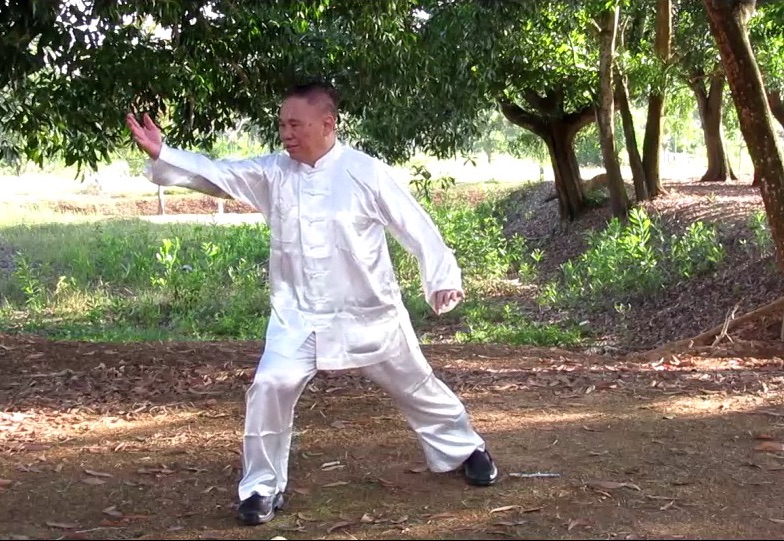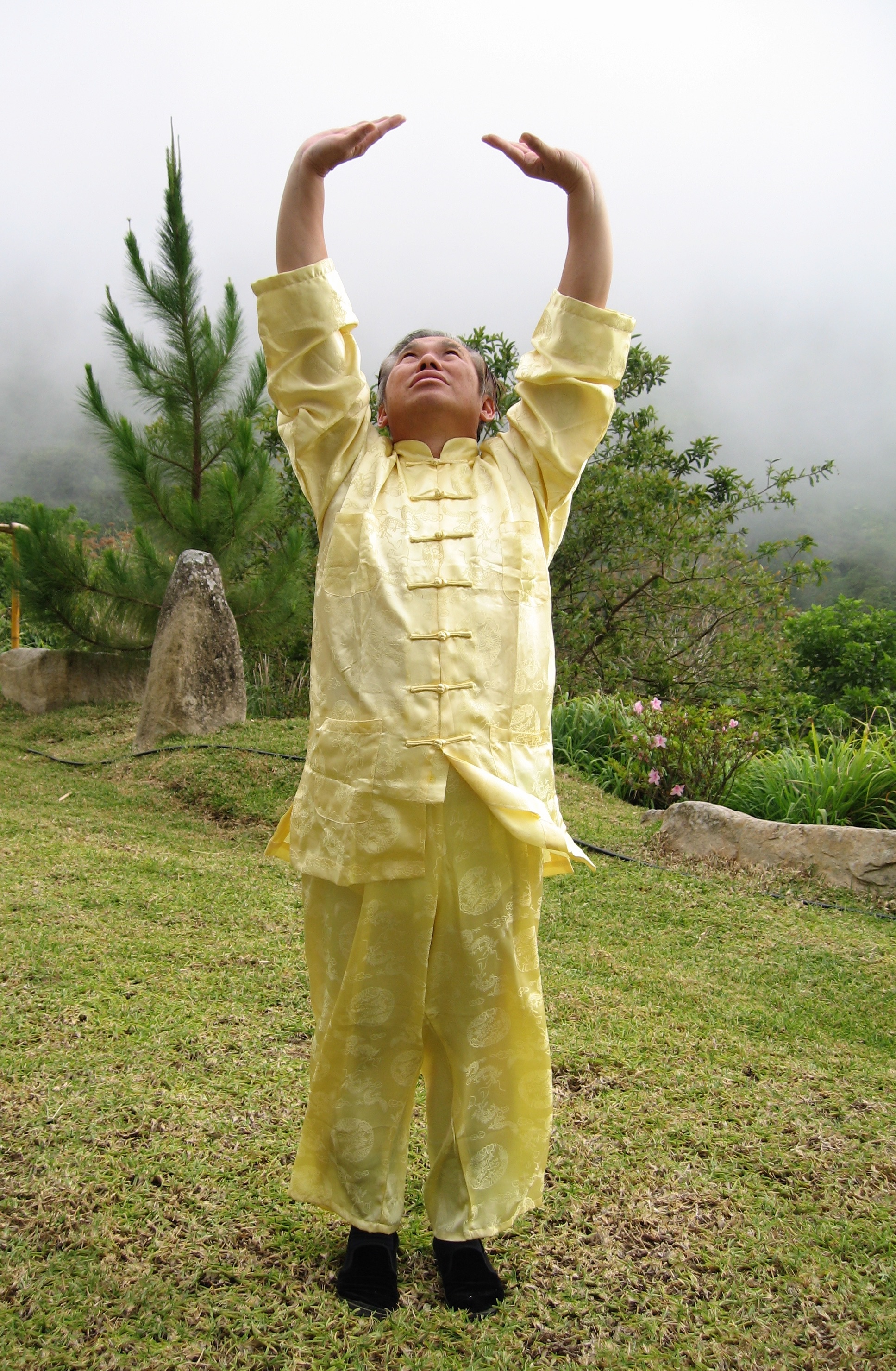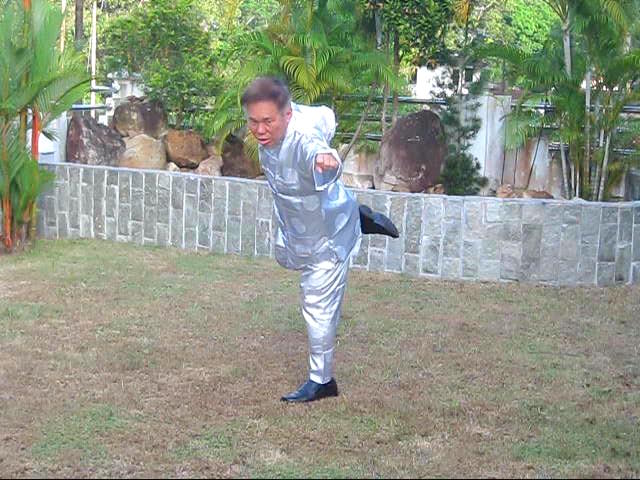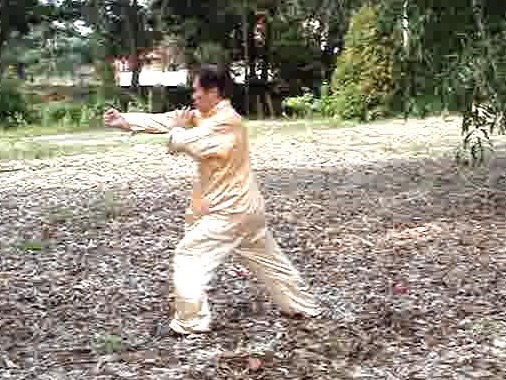SELECTION OF QUESTIONS AND ANSWERS
FEBRUARY 2018 PART 2

Wudang Cotton Palm
Question 1
Your use of analogies is very effective. Can you please tell a bit more of this?
— Sifu Tim Franklin, Shaolin Wahnam UK
Answer
Using analogies is a very useful way to explain a less known process or event clearly. There are a few guidelines for their effective uses.
- If an event happens only occasionally, the analogy should happen before the process. If A is an analogy, and B the process, A happens before B.
- The analogy should be well known to readers or listeners. My analogy of chi flow and cash flow is a good example. Chi flow is not well known, except in our school, but cash flow is.
- If the analogy is imperfect, the imperfection should be mentioned. For example, I may use the analogy of a river and a glacier for the process of flowing force and consolidated force, but I mention that even when the force is consolidated, it is still flowing, by itself as well as on the whole, whereas the ice-blocks in a glacier is a solid mass.
Question 2
Are these correct statements?
The art of Iron Palm develops the skills of consolidating force. It often does this through external training methods which consolidate force more permanently into the physical structure. One danger with this is that the skill of flowing force is not practiced and may even be diminished, which would lead to harmful effects, which could include physical deformity.
The art of Cosmos Palm develops the skills of flowing force and consolidating force with more focus on the skill of consolidating force, i.e. bringing flowing force to bear in a more limited time/area. The effect of this training has beneficial effects as it is based on the skill of maintaining/enhancing flowing force.
The art of Cotton Palm develops the skills of flowing force and fa-jing, i.e. having a continuous flow and being able to express "bursts" of energy. The effect of this training also has beneficial effects as it is based on the skill of maintaining/enhancing flowing force.
Answer
Your statements are correct. But I would add the following comments.
When Iron Palm practitioners have harmful effects, like deformed palms, it is considered wrong training. Unfortunately, many Iron Palm practitioners train wrongly in this sense. This is especially so if they learn from books or videos, or have the concept of "no pain no gain".
Iron Palm is considered an external art. But over a long time and trained correctly, it can become internal. The story of the great Iron Palm master, Gu Rui Zhang, is well-known. He gave a gentle tap on a pile of about 12 bricks, and all broke. The night before, someone thought the bricks were fake, so he changed all the bricks. But all the same Gu Ru Zhang broke the bricks.
A Cosmos Palm practitioner can choose to let his force to be flowing or consolidated when striking opponents. He only consolidates his force when he strikes. At other time, his force is flowing.
The force of a Cotton Palm practitioner is flowing powerfully when he strikes. He does not need to consolidate it.

Learning chi kung from a genuine teacher; if you learn from books or videos you only learn the outward form
Question 3
I haven't yet attended a course because as per your website, there are no instructors in my city or even country and I am not in a position to undertake international travel at this point.
— Sourabh, India
Answer
Without a competent instructor, it is very difficult to learn chi kung on your own. Even competent instructors are rare. More than 80% of chi kung practitioners today perform gentle physical exercise using chi kung techniques, but they honestly think it is chi kung.
Swimming or driving is a good analogy. You don't learn swimming or driving a car on your own, like from a book or a video. You need to learn swimming or driving from a living instructor. You may learn the techniques of swimming or driving from a book or a video, but without the skills you still cannot swim or drive even when you know the techniques.
Question 4
Is there any other way to learn e.g. from DVD or online?
Answer
It is helpful to differentiate two different types of learning -- learning knowledge and learning skills.
It is possible, in fact recommended, to learn knowledge from books, videos and online. Many university students go to libraries to read about the subjects of their study.
It is impossible to learn skills from books, videos and online. Learning chi kung is learning skills. This is a fact many people may not realize. They confuse learning skills with learning knowledge, and learn from books, videos and online. Some of them may even teach others, in a grandiose ideal of sharing.
Some may practice chi kung insufficiently or from incompetent instructors. They practice chi kung, which is energy exercise, as physical exercise, and ususally they are not aware of it. This is a main reason why chi kung has today debased beyond recognition.
Those who have basic skills of chi kung, or any art, can learn from books, videos or online. Indeed, students in Shaolin Wahnam learn kungfu sets as well as combat applications from the videos I post on my website. This is making good use of modern technology, a facility not available in the past.

Drunken Kungfu
Question 5
I would like to ask about ''Beggar Su'' (Su Hat Yee) and his famous ''Drunken Boxing''. Was his drunken boxing a complete style in its own right? If so, did he inherit this style from a master or did he invent it himself?
— Mohammed, UK
Answer
The Drunken Kungfu of Begger Su, or Su Hat Yee in Chinese (Cantonese) is a complete style in its own right. If one learned Drunken Kungfu from Beggar Su, it was not necessary for him to practice any other martial arts.
It is interesting that today when one practices a martial art other than kungfu, he has to cross-train to be combat efficient. If he trains Boxing, he would not know what to do, except to bounce back, when an opponent kicks him. If he trains Taekwondo, he would not know what to do if his kicking leg is caught. If he trains Karate, he would not know what to do if he is pinned down.
Strictly speaking, these martial arts are martial sports. They are effective only when safety rules are used. If a martial sport practitioner were to use his martial sport in a real fight against a seasoned fighter without any martial art, the martial sport practitioner would be badly beaten.
Most kungfu practitioners today are worse. If they were attacked by a Boxer, a Taekwondo practitioner, a Karateka, or a martial artist or sportsman of any style, they would not know what to do. At best they would fight using other martial art techniques. They do not know how to use their kungfu. Strictly speaking they are not kungfu practitioners, they are kungfu gymnasts. But genuine kungfu practitioners are good fighters.
A student trained by Begger Su in his Drunken Kungfu would be able to use his Drunken Kungfu effectively against any attack. Yes, against any attack, including being pinned-down, if an opponent was foolish enough to pin him down.
Question 6
Was Beggar Su a master of Hung Gar (Southern Shaolin), and then the drunken boxing was only a subset or individual form of his overall Hung Gar syllabus? If so, again, did he invent this form or was it passed onto him from another master?
Answer
Yes, Beggar Su was a Hoong Ka master. His sifu was Chan Fook. You may be pleased to know it was the same Chan Fook who taught your sitaikung, Ng Yew Loong. Ng Yew Loong taught Uncle Righteousness, and Uncle Righteousness taught me. I am not sure whether Beggar Su or Ng Yew Loong was more senior.
I believe Beggar Su did not consciously invent his Drunken Kungfu. He liked to drink liquor, which I call Chinese wine, which could be very strong. When he was drunk, or appeared to be drunk, he performed his kungfu, usually in real fighting against other people. Eventually, when he was sober he also performed his kungfu, usually on his own, in a drunken way. Hence, his Hoong Ka Kungfu became Drunken Kungfu.
By the way, this is how kungfu should be performed, whether in real fighting or in our own practice. In other words, when we fight, we perform our kungfu the way we practice it. When we practice, we perform our kungfu the way we use it in real fighting.
If we were to use a modern mathematical term, we can say that his Drunken Kungfu was a subset or individual form of his overall Hoong Ka syllabus. But I can imagine it was a very big subset, as big as the set itself, or even bigger than the set because in his fighting he could have incorporated some useful techniques which he did not originally learned from his sifu.
He did not invent Drunken Kungfu, nor learned it from his master. Drunken Kungfu evolved itself.
We have a parallel event in our school. I did not learn chi flow, nor was it passed down onto me from another master. Chi flow, which is a hallmark of our school, evolved itself.

Hoong Ka Kungfu
Question 7
I also have another question about kung fu iron rings. I have seen many practitioners argue that doing the Iron Wire set with the iron rings adds to their power. But others have argued the opposite, that it is harmful to practise Iron Wire set while wearing the iron rings. What is your opinion on this, Sifu?
Answer
Instead of iron rings, many Iron Wire practitioners wear copper rings. Iron may rust, and it may be harmful to humans. But copper is beneficial. When I practiced Iron Wire in my early years, I wore rings made of stainless steel. Stainless steel didn't rust, though I am not sure whether it was as beneficial as copper.
If we train Iron Wire properly wearing rings, irrespectively of whether they are made of iron, copper or stainless steel, it will add to the power. As a rough guide, training with rings in five minutes is like training without rings in ten minutes. When the rings show signs of damage, like starting to rust, we should change them.
On the other hand, training Iron Wire wrongly, irrespective of whether we wear rings, is harmful. It is easy to train Iron Wire wrongly. When I started training Iron Wire, I trained wrongly. At that time I did not use rings. I used isometric exercise instead of internal force. Luckily I had chi flow, which erased, or at lease minimized the harmful side effects. Later I corrected my mistake and used internal force.
If you observe Iron Wire practitioners, including some masters, you may notice that many of them have big muscles. Having big muscles is a sure sign of wrong training in Iron Wire. If you observe pictures of great masters like Wong Fei Hoong and Lam Sai Weng, they didn't have big muscles, but there was no doubt that they had a lot of internal force. Much of their internal force came from Iron Wire training.
Question 8
In our own Shaolin Wahnam lineage, were there any exercises or sets that Sigung Ho Fatt Nam or Sigung Lai Chin Wah required their students to practise while wearing iron rings?
Answer
No, there are no exercise or sets in Sifu Ho Fatt Nam's lineage or Sifu Lai Chin Wah's lineage that required students wearing rings.
I did not learn Iron Wire from my two sifus, though I consulted Sifu Ho Fatt Nam on Iron Wire. My learning of Iron Wire was mainly from Sifu Lam Sai Weng's book.
I taught the Iron Wire set to a promising student in Chin Wah Kungfu Gymnasium. It was very powerful. The Iron Wire set has now become established in that school.
For you and other students of Shaolin Wahnam, there is no need to wear rings of any metal when practicing the Iron Wire set. It is because we are very effective in developing internal force. In fact, we should guard against over-training, instead of attempting to add power to our internal force.
LINKS
Selected Reading
- We Celebrate Life
- These Amazing Teachings Have Changed my Life
- Fun with Drunken Eight Immortals
- A Lesson from Ireland
- Scenic Views of USA Tour
